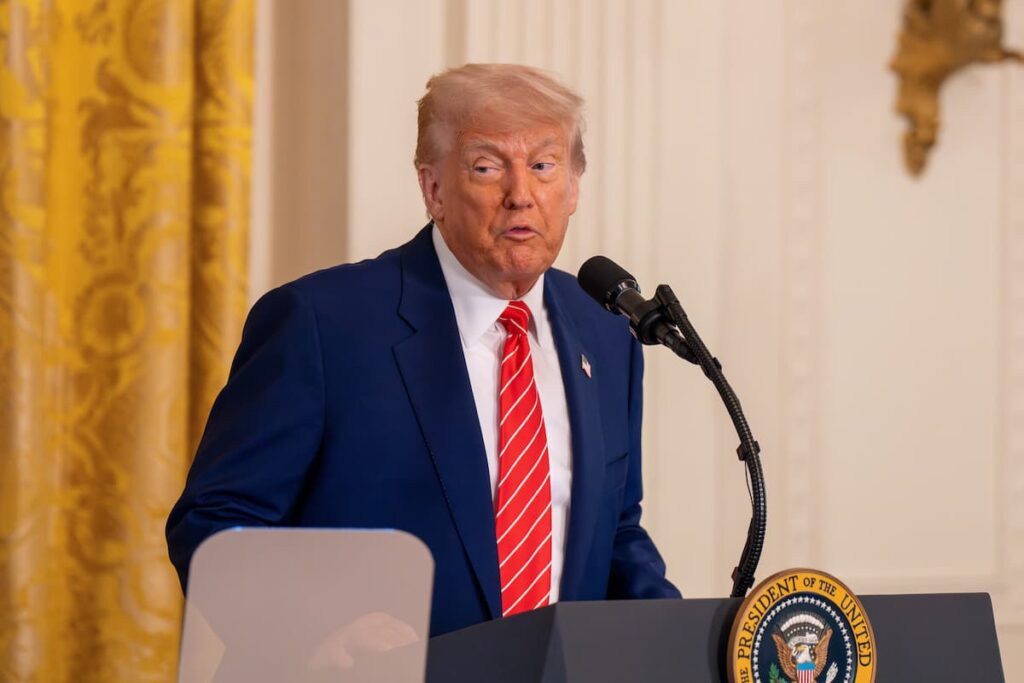A Shift in Strategy Toward the Ukraine Conflict
U.S. President Donald Trump has announced a new strategy to pressure Russia into ending its war in Ukraine. The plan includes two key elements: a fresh pipeline of weapons to Kyiv and a strict 50-day deadline for Russia to agree to peace terms. If Moscow fails to respond, the U.S. will impose 100% tariffs and extend secondary sanctions to countries continuing to buy Russian oil.
This announcement represents a clear change in Trump’s stance. Previously, he distanced himself from the conflict. Now, visibly frustrated with Russian President Vladimir Putin, he has decided to act more decisively. While still avoiding a direct expansion of the U.S. military role, Trump is leaning on economic tools and indirect arms support through European allies.
The mechanism is designed to allow European nations to purchase American weapons and transfer them to Ukraine. This move enables Washington to maintain a reduced direct footprint in the war while still providing crucial support to Ukraine’s defenses.
Weapons Through Europe: A Tactical Path
According to U.S. officials, the European purchases will include Patriot missile systems, short- and medium-range missiles, and Howitzer rounds. These defensive systems are especially vital for protecting Ukrainian cities and infrastructure from ongoing missile and drone attacks.
The urgency of this support has been reinforced by repeated Ukrainian requests for at least 10 new Patriot systems. These platforms are currently considered irreplaceable and play a critical role in civilian protection across the country.
European countries expected to participate in the weapons purchase and transfer program include Germany, Finland, Denmark, Sweden, and Norway. The cooperation was developed during a series of meetings following Trump’s election, as European officials sought alternatives in case U.S. support declined under his leadership.
By shifting the purchase and delivery responsibility to NATO members, the U.S. avoids the appearance of expanding its direct involvement in the war, while still accelerating arms support to Kyiv.
Economic Pressure as a Tool of Diplomacy
Trump has also introduced an economic ultimatum aimed squarely at Moscow. If Russia does not engage in serious peace negotiations within the designated 50-day period, the U.S. will impose sweeping tariffs and secondary sanctions. While direct trade between the U.S. and Russia remains limited, these new sanctions target third countries — primarily India and China — that continue to import Russian oil.
The administration believes that by hitting Moscow’s energy revenue streams indirectly, it can have a stronger and more immediate impact on the Russian economy. This represents a sharp departure from past tactics and is intended to show that the U.S. is prepared to use all available levers to bring the war to an end.
European partners, meanwhile, have shown renewed enthusiasm for supporting Ukraine, a shift Trump acknowledged as a positive surprise. What began as concern about American disengagement has turned into a collaborative framework where Europe shares a greater part of the burden.
Signals to Moscow and Domestic Political Shielding
The strategy also serves a political purpose at home. By structuring the plan around European purchases, Trump shields himself from criticism that he is reversing his campaign stance on limiting U.S. involvement. At the same time, he can highlight the financial and strategic benefits, including potential profits from weapon sales and faster delivery timelines due to European stockpiles.
For Ukrainian leadership, the move is welcomed as a tangible sign of continued Western backing. Discussions with the U.S. and NATO partners have intensified, focusing not only on the Patriots but also on broader defense agreements.
Trump’s message to Moscow is clear: continued aggression will carry growing costs. While his relationship with Putin has long drawn scrutiny, his recent actions mark a turning point. U.S. officials suggest this tougher approach is aimed at signaling the seriousness of Washington’s stance and pressuring the Kremlin to reconsider its strategy.



